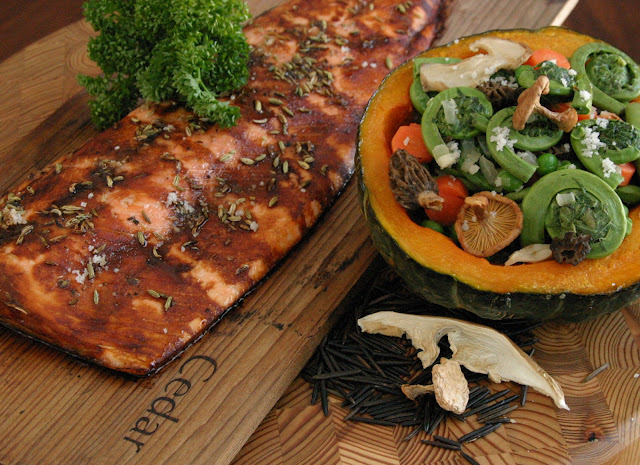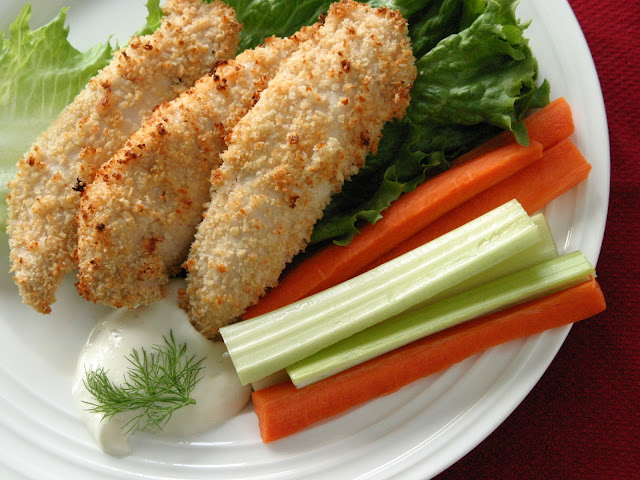A food trend that is only going
to gain momentum is the demand for local and Canadian grown and produced food.
We have a bounty of good food in this country.
I have spent the past year
searching out interesting locally produced food products. Today I will feature
Vancouver Island sea salt, Yorkton, SK garlic and foraged wild foods from Love,
SK.
Last year I was on the Island
and purchased the locally produced sea salt. Vancouver Island Salt Company (
www.visaltco.com), located in the beautiful
Cowichan Valley near Victoria, produces the only Canadian fleur de sel. I was
curious and asked founder, owner and former chef, Andrew Shepherd, how he came
up with the idea to produce sea salt. He says that it was a challenge
from a friend over a cold beer. After the first batch he was hooked and he
formed his company in 2010.
Andrew is self taught and makes
infused salts alongside the basic sea salt. At the moment he is perfecting a
blue cheese infusion and a mandarin orange and lime salt. They rely heavily on
word of mouth to sell their products. He quickly adds that 95% of the fuel used
to evaporate the salt water is recycled vegetable oil.
It was recently announced that
he has been chosen as one of twenty food artisans from hundreds that applied
from across Canada for the Ace Artisan Incubator as seen on the Food Channel.
In June they will participate in a mentorship program in Toronto. They will
learn more about branding, marketing and business planning and will be honoured
at a showcase. Two will be chosen for further business development.
Congratulations, Andrew.
In Yorkton I met up with Anna
and Darrel Schaab from The Garlic Garden (
yorktongarlic.com) as they were
harvesting scapes. Scapes are curly shoots that grow from the garlic stalk and
must be removed so the heads develop fully. They have wonderful flavour and are
also used in cooking.
Schaab’s purchased a small farm
but couldn’t make it work with traditional grain farming. Bob, the local garlic
grower, suggested they grow garlic and he became their mentor and taught them
everything they needed to know.
In the fall of 2005 they planted
their first crop and the rest is history. On a typical day at the Saskatoon
Farmers’ Market they sell 200 lb. of garlic. In addition they produce a variety
of garlic products. They primarily grow a hard neck variety called Music. I
still have some in my cold room from last summer’s harvest and it is firm and
fresh.
A most unusual business is
Prairie Infusions (
www.prairieinfusions.com) in Love, SK. The website says, “We
specialize in the wild harvest of non-timber forest products in Saskatchewan.
We forage for science, retail, industry, gastronomy, and individuals.”
As I catch up with owner and
founder Elisabeth Poscher, a University of Arizona trained scientist, she is
still foraging in the winter weather. What do you find in the winter? “Right
now we are picking balsam poplar buds and chaga, a rare type of mushroom. Soon
it will be maple and birch syrup season.”
In her own words, “I am fascinated, almost obsessed, by drylands such as the
Prairies, and Saskatchewan for me was love at first sight. I've made my passion
my business while at the same time making my tiny contribution to a more
peaceful and healthy world.”
I am
curious how she finds the mushrooms, fiddleheads and a large menu of other
plants. She says that she uses flora and fungi identification literature,
herbaria, libraries, maps, microscope and spore prints as research tools for her quest and she applies her training and expertise.
Fiddleheads are the unfurled
fronds of the ostrich fern and get their name because they resemble the head of
a fiddle. They are foraged in cool, moist forest areas during late April and
May. They have a delicate green flavour and best served simply with butter or
olive oil, a sprinkling of sea salt and a squeeze of lemon. Use with pastas,
quiche or omelets.
They are an excellent source of
beta carotene, niacin and Vitamin C and are low fat and calories.
According to Health Canada,
fiddleheads must be cooked before eating. Steam or boil until crisp tender and
serve hot or chill in ice water to use in salads. They can be frozen by
blanching for 2 minutes, chilling and draining well before packing into freezer
bags.
Several varieties of wild
mushrooms are foraged. The season is late summer and early fall. Because they
have a short shelf life, the mushrooms are dried. The flavour is intensified
and they need to be reconstituted in liquid before using.
Vegetable Ragout
fiddleheads
1 small squash
carrots, sliced into rounds
shelled fresh peas
unsalted butter
shallots
thyme sprigs or dried thyme
1 bay leaf
dried wild mushrooms
reserved mushroom broth
garlic, minced
sea salt
freshly ground black pepper
There are no amounts listed. Use
what you like best and for the number of people being served. Estimate 1 c.
(250 mL) per person. Leftovers can be refrigerated.
Cut squash in half and scoop out
seeds. Spray lightly with oil, season with sea salt and place cut side down on
a baking sheet. Bake at 350F (175C) for 25 minutes or until fork tender. Set
aside.
Hydrate dried mushrooms in
boiling water to cover for at least 20 minutes. Reserve the flavour rich water
to use in this recipe.
In a pot of salted water boil
the fiddleheads until crisp tender, approximately 4 minutes if fresh or 2
minutes if frozen. Drain and add to a bowl of ice water to stop the cooking,
then drain on paper towels. Boil the carrots in the same manner for 3 minutes
and chill.
In a large heavy skillet combine
butter, shallots, garlic, thyme, bay leaf, roughly chopped mushrooms, some
broth, and salt and pepper to taste and simmer the mixture, uncovered, for 5
minutes to reduce slightly if too much liquid.
Add fiddleheads, carrots, peas
and more broth or water, if necessary. Simmer mixture, for 1 minute. Discard
the bay leaf and season with salt and pepper.
Serve in baked squash.
Cedar Planked Steelhead Trout
with Birch Syrup
cedar plank
fillet of salmon, steelhead
trout or Arctic char, skin on
olive oil
birch syrup
sea salt
fennel
poplar buds or juniper berries,
optional
Soak plank overnight.
Preheat oven to 425 F (215
C). With a mortar and pestle, grind
sea salt, fennel and poplar buds or juniper berries.
Pat fillet dry with paper
towels. Rub with olive oil and season with salt mixture, then drizzle with
birch syrup. Refrigerate for 30 minutes.
Meanwhile preheat plank in oven
until smoking hot. Brush with olive oil.
Lay marinated salmon, skin side
down, on plank. Return to hot oven and bake about 10 minutes per inch or until
almost cooked to medium in the thickest part. Do not overcook. It will continue
to cook after removing from oven. Salmon cooked to medium is very moist, tender
and full of flavour.
This can also be done on the
barbecue using the same procedure. Don’t worry if your plank smoulders. The
smoke will add another dimension to the flavour.
Notes on Cedar Planks
Cedar planks can be purchased at
cooking stores. You can also make your own by simply cutting a piece of 2” x 8”
cedar to a length that will fit in your oven or barbecue. Be sure it has not
been chemically treated.
Notes on Birch Syrup
1c. (250 mL) of birch syrup
requires 6.6 gal (25 L) of birch sap. It is twice as much work as making maple
syrup. It is comprised of two sugars, fructose and glucose. The flavour is much
less sweet than maple syrup and more like a balsamic vinegar reduction. It has
many nutrients and is considered to be beneficial in the treatment of
arthritis, muscular pain, hypertension, tendonitis, and an immune system
support for geriatric patients.












































